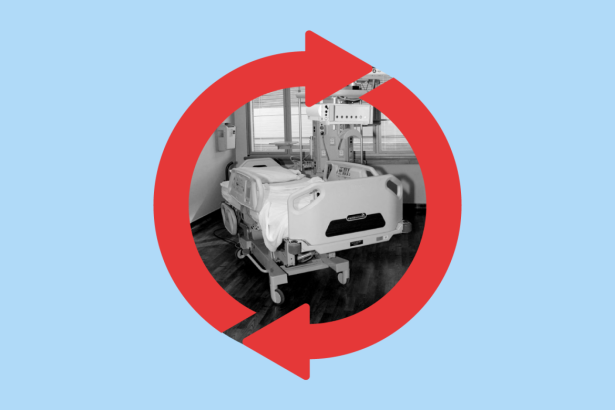Medicare is reducing payments to nearly half of the nation’s hospitals for excessive patient readmissions, including 81 in Georgia, Kaiser Health News reported Thursday.
The total penalized in Georgia represent 55 percent of the state’s hospitals, higher than the national average of 47 percent. But if you remove facilities that are exempt from penalties from the calculation, the percentage of Georgia hospitals facing reductions is 83 percent.

This is the 10th annual round of penalties, which were created by the 2010 Affordable Care Act and launched in October 2012. The program’s goal is to encourage hospitals to reduce the number of discharged patients who return for another hospital stay within a month.
Readmissions occurred frequently in the past. For instance, nearly a quarter of Medicare heart failure patients ended up back in the hospital within 30 days in 2008, KHN reported. Policymakers wanted to counteract the financial incentives that hospitals had in getting more business from these boomerang visits.
A total of 2,499 hospitals nationally were penalized. The average penalty is a 0.64% reduction in payment for each Medicare patient stay from the start of this month through September 2022, Kaiser Health News reported. (Here’s a link to look up hospitals and penalties.)
KHN’s Jordan Rau reported that 39 hospitals received the maximum 3% reduction. Those include two in Georgia: Coliseum Medical Centers in Macon and Piedmont Columbus Regional Northside in Columbus.

The report said 547 hospitals had so few returning patients that they escaped any penalty. Sixteen Georgia hospitals escaped penalties, including rural facilities such Emanuel Medical Center in Swainsboro, in east Georgia, and Habersham County Medical Center in Demorest, in northeast Georgia.
Hospitals specializing in care for children, psychiatric patients or veterans are exempt from the penalties. Rehabilitation and long-term care hospitals are also excluded, as are critical access hospitals, which are treated differently because they are the only inpatient facilities in their areas.
The hospital industry and some academics have raised concerns that some hospitals, fearing the financial repercussions, may avoid readmitting patients who actually need further inpatient care. Other skeptics have said the penalty program is not showing major benefits.
Congress’ Medicare Payment Advisory Commission, or MedPAC, has found that readmission rates declined from 2008 to 2017 after the overall health conditions of patients were taken into account, KHN reported.
Heart failure patient readmission rates dropped from 24.8% to 20.5%, heart attack patient rates dropped from 19.7% to 15.5%, and pneumonia patient rates decreased from 20% to 15.8%, according to the most recent MedPAC analysis.
Readmission rates for chronic obstructive pulmonary disease, hip and knee replacements, and conditions that are not tracked and penalized in the penalty program also decreased.
The penalty program “has been successful in reducing readmissions, without causing an adverse effect on beneficiary mortality,” MedPAC wrote.
The Georgia Hospital Association said in a statement Thursday that hospitals “take readmissions very seriously and have always been focused on appropriate care transition planning to help patients avoid readmission.”
Of the 81 Georgia hospitals evaluated in the readmission program, GHA said, more than half reduced their readmission rates from last year. “Hospitals will continue to work diligently to reduce readmission rates by providing patients with every resource available to continue their care and recovery after discharge,” GHA said.
The current penalties were calculated by tracking Medicare patients who were discharged between July 1, 2017, and Dec. 1, 2019.
Typically, the penalties are based on a three-year tracking period, but this time the U.S. Centers for Medicare & Medicaid Services opted for a 30-month period, excluding the six months that included early 2020. That’s when the pandemic hit the United States, causing unprecedented disruptions at hospitals as they struggled to handle the first wave of Covid-19 patients.


